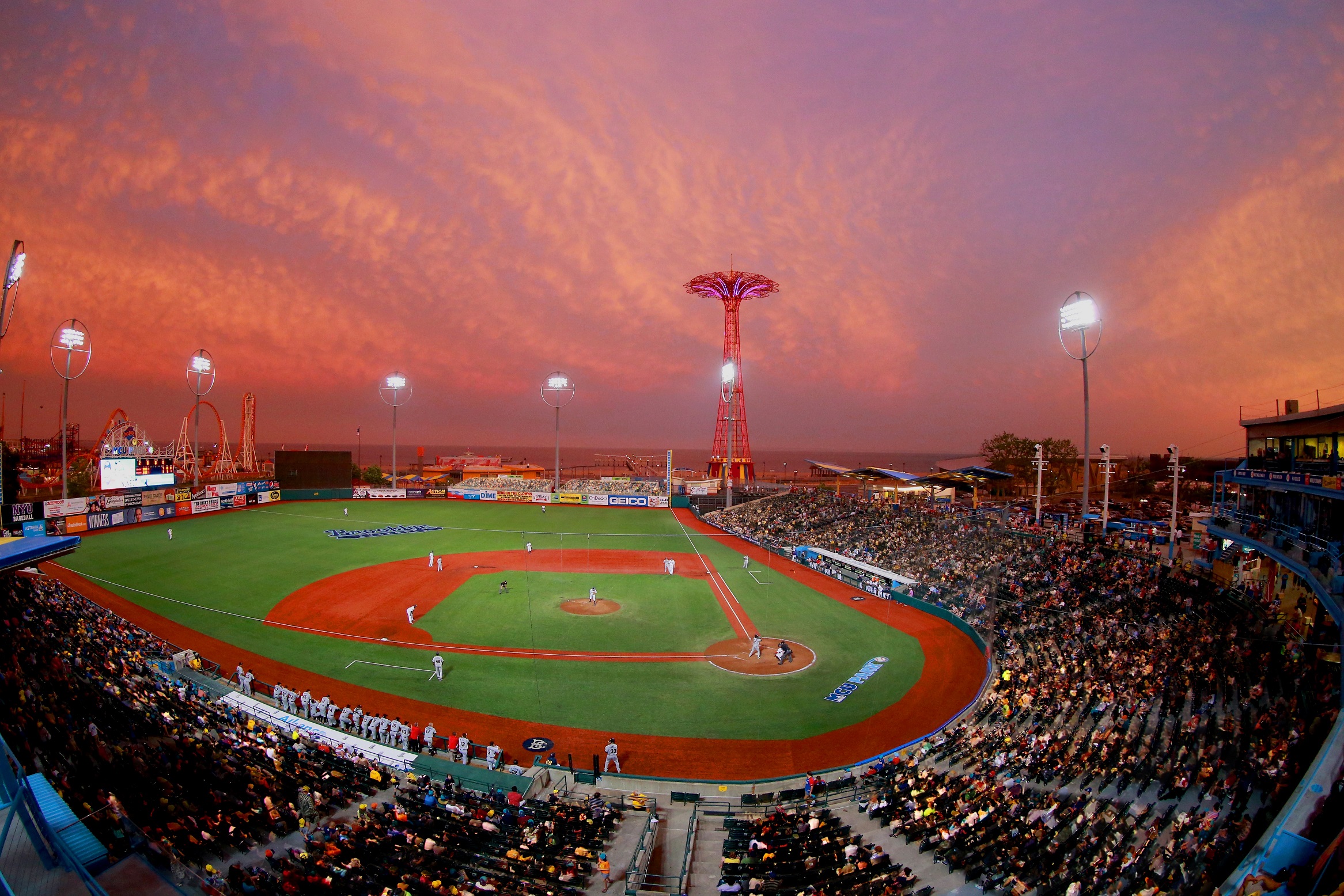A Short History of the Brooklyn Dodgers
This post courtesy of Explore Brooklyn, an all-inclusive guide to the businesses, neighborhoods, and attractions that make Brooklyn great. Even though they’ve been gone since 1957, it’s hard to get more Brooklyn than the Brooklyn Dodgers. Take a little trip into history with us to find out how the Dodgers began, what they did when they…
This post courtesy of Explore Brooklyn, an all-inclusive guide to the businesses, neighborhoods, and attractions that make Brooklyn great.

Even though they’ve been gone since 1957, it’s hard to get more Brooklyn than the Brooklyn Dodgers. Take a little trip into history with us to find out how the Dodgers began, what they did when they were here, and how we lost them.
Starting out as the less snazzily named Brooklyn Grays in 1883, the team was founded by real estate mogul and baseball fan Charles Byrne, Their first home was Washington Park on 5th Avenue in Park Slope. After winning the American Association league championship in 1889, they moved to the National League and promptly won that championship as well, the only team to win back-to-back in both leagues. Their success only grew as they took on players from teams that had folded.
 Ebbets Field 1913-1957
Ebbets Field 1913-1957
In 1895 the team’s name changed to the Brooklyn Trolley Dodgers, so-called due to Brooklyn’s notoriously dangerous trolley cars (check out part 1 and part 2 of our Brooklyn Trolley Dodgers walkabouts). It was soon shortened to simply the Brooklyn Dodgers, even though nicknames like the Trolley Dodgers, the Bridegrooms, the Superbas, and the Robins persisted for some time. They moved into Eastern Park in Brownsville, but as it wasn’t a very convenient location, they only played seven seasons there before moving in 1913 to the park that is most closely associated with the Dodgers: Ebbets Field in Flatbush.
Things picked up with manager Wilbert Robinson, known as “Uncle Robbie.” Robinson took over as president after Charles Ebbets passed away. Robinson’s attempt at playing both roles led to some confusion on the field, and in the late 20s the team was often referred to as “the Daffiness Boys.” One infamous play wound up with three players — the delightfully named Babe Herman, Dazzy Vance, and Chick Fewster — on third base at the same time. Once Uncle Robbie went back to just managing, things calmed down substantially.
In the 30s the Dodgers were lovingly referred to by a sports cartoonist as “Dem Bums,” and the name stuck. Dem Bums won the pennant in 1934 under Casey Stengel, and in 1941 the first televised major-league baseball game was played at Ebbets Field, with Brooklyn walloping the Cincinnati Reds 6-1.
 Branch Rickey signs Jackie Roosevelt Robinson
Branch Rickey signs Jackie Roosevelt Robinson
In 1947, the Dodgers made a decision that changed baseball forever. Jackie Robinson became the first African-American to play for a 20th Century major league team. Not only did Robinson win the inaugural Rookie of the Year award (later changed to the Jackie Robinson award), but his inclusion in the league was considered a major civil rights milestone. He was also the first African-American to enter the Baseball Hall of Fame. You can visit his grave right here in Brooklyn, at Cypress Hills Cemetery.
 Pee Wee Reese, Roy Campanella, Jackie Robinson, and Gil Hodges
Pee Wee Reese, Roy Campanella, Jackie Robinson, and Gil Hodges
The 40s were a golden age tinged with heartache for the Dodgers, as stars such as Robinson, Pee Wee Reese, Gil Hodges, and Roy Campanella led the team to win five pennants, and then lose each subsequent World Series to the New York Yankees. 1951 saw pennant playoff devastation at the hands of arch-rivals the Giants, when a three-run, walk-off home run from Giant Bobby Thomson became known as “The Shot Heard ‘Round the World.” But in 1955, the fabled Boys of Summer won the ultimate prize, finally taking down the Yankees.
 Burt Shotton, Brooklyn Dodgers’ manager, 1947-50
Burt Shotton, Brooklyn Dodgers’ manager, 1947-50
Enter the villain of the story (if you’re a Brooklyn Dodgers fan): businessman Walter O’Malley, who had majority ownership of the Dodgers. While looking for land for a new stadium to replace Ebbets Field, he ran into trouble from New York’s “master builder” Robert Moses, who wanted O’Malley to purchase land in Flushing Meadows, Queens (the current site of The Mets’ Citi Field). A power struggle ensued. Los Angeles was looking for a team, O’Malley was looking for a stadium built to his own liking, and that, as they say, was that. The Brooklyn Dodgers played their last game on September 24, 1957, and the Los Angeles Dodgers their first on April 18, 1958.
Sadly, no Brooklyn Dodgers stadiums remain standing. But if you want to see a little Dodger history, head to the Brooklyn Baseball Gallery at MCU Park in Coney Island, home of the Brooklyn Cyclones minor league team. They’ve got the entire collection from the former Brooklyn Dodgers Hall of Fame from Ebbets Field. For just a $1 suggested donation, you can see Jackie Robinson’s bat and Sandy Koufax’s cap, among other treasures.
All photos courtesy of Sports Encyclopedia.











i think the history of the dodgers is kind of the saddest one i’ve ever heard. first, brooklyn loses its beloved baseball team; a source of borough-wide pride, AND it loses the home stadium of America’s first black basebal player–a building that should have been a historic treasure for that reason alone. But the other half of the sad story that i read recently is that the LA Dodgers stadium built after the move was built in place of a poor Mexican American neighborhood in LA–where Mexican Americans were literally cheated out of their homes, sometimes with the threat of being deported.
so what happened to the Dodgers was very much a bi-coastal lose-lose situation :